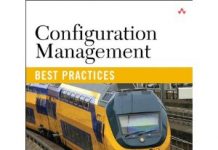Positive psychology is an emerging wellness approach developed by noted psychologists Martin Seligman and Mihaly Csikszentmihalyi that focuses on encouraging effective pro-active behaviors [1]. The principles apply to many business and technical situations as well as to the clinical settings in which they were originally introduced. Dr. Seligman noted in his writings that there are essentially three pillars that make up the scientific endeavor of positive psychology. The first two relate to individual behavior and the third is the study of positive institutions which Seligman suggested was “beyond the guild of psychology” [2]. This article will focus on that third pillar which falls within the realm of organizational psychology and is likely of great interest to anyone who wants to be part of an effective organization.
The first two pillars of positive psychology focus on positive emotion and positive character which each contribute to the development of a sense of self-efficacy and personal effectiveness, both of which are very important to individual success. Organizations, not unlike the people who comprise them, often have unique and complex personalities. Individuals who join the army or the police force certainly experience the culture of the organization in a very real way. When people fail in their jobs, it is sometimes due to factors beyond their direct control; perhaps they could not fit into the culture and expectations of the organization itself or the culture itself made success very difficult to attain. What are the traits that we might want to highlight when looking at an organization from a positive psychology perspective?
Organizations that encourage curiosity, interest in the world, and a general love of learning provide an environment that is consistent with what Dr. Seligman had in mind with his first cluster which he termed wisdom. Technology professionals may understand these traits in terms of organizations which encourage learning new technologies and frameworks and provide opportunities for professionals to constantly improve their skills. Judiciousness, critical thinking and open-mindedness – along with ingenuity, originality and practical street smarts are other valuable attributes found among employees in effective organizations. Social, personal and emotional intelligence describe organizations which encourage their members to respectfully understand both individual and group differences, including cultural diversity.
Organizations which encourage employees to feel safe when speaking up or taking the initiative can be understood to exhibit valor and courage which is the cluster that Seligman termed bravery. Integrity and honesty, along with perseverance and diligence, are also grouped with these positive traits. The degree to which these characteristics and their active expression are valued in an organization will significantly impact that firm’s functioning and results. Positive organizations encourage their employees to take initiative and ensure that employees feel safe – even when reporting a potential problem or issue. Dysfunctional organizations punish the whistleblower, while effective organizations not only recognize the importance of being able to evaluate the risks or problems that have been brought to their attention- they actively solicit such self-monitoring efforts.
The cluster of humanity and love consists of kindness, generosity and an intrinsic sense of justice. Organizations with leadership that encourages a genuine sense of delivering value to customers and giving back to their community, especially firms with managers who actively model these behaviors, are more likely to see employees living these values on a daily basis. Of paramount importance is good citizenship and teamwork as well as a strong culture of leadership. While many organizations may have individuals who exhibit these strengths, highly effective organizations make these values a cultural norm, which in turn then becomes the personality of the organization itself.
The cluster of temperance includes self-control, humility and modesty which can be understood in terms of delivering quality to all of their stakeholders, including ensuring real value to stock-holders instead of simply advertising and marketing hype. Gratitude is a fundamental trait of many successful organizations which model positive behaviors and actively participate in helping the communities that support them. These are often the same organizations which have a strong sense of hope and optimism and are mindful of the future – again all traits found in Seligman’s view of positive psychology. Some organizations have a culture that exhibits spirituality, faith and even religiousness which aligns with their personality. Most importantly, playfulness and humor, along with passion and enthusiasm, all make for a corporate environment that breeds successful and loyal employees.
Over the years, many organizations have unfortunately become associated with greed and dysfunctional behavior. However, the study of positive psychology provides an effective, comprehensive and attainable model for those companies seeking to create a healthy, growth-oriented culture that will encourage and nurture the positive behaviors which research indicates lead to success and profitability!
References
[1] Seligman, M. E. P., & Csikszentmihalyi, M. (2000). Positive psychology: An introduction. American Psychologist, 55, 5–14
[2] Seligman, Martin, Authentic Happiness: Using the New Positive Psychology to Realize Your Potential for Lasting Fulfillment, Free Press, New York 2002
[3] Abramson, L. Y.; Seligman, M. E. P.; Teasdale, J. D. (1978). “Learned helplessness in humans: Critique and reformulation”. Journal of Abnormal Psychology 87
[4] Deming, W. Edwards (1986). Out of the Crisis. MIT Press
[5] Aiello, Bob and Leslie Sachs. 2010. Configuration Management Best Practices: Practical Methods that Work in the Real World. Addison-Wesley Professional.

















